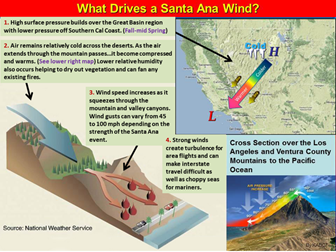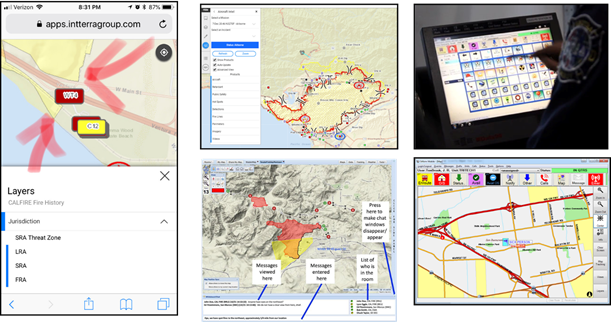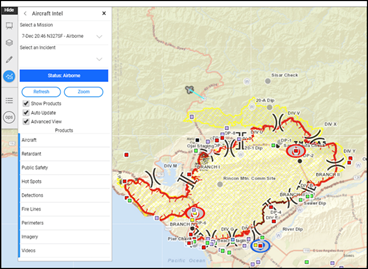- Home
- :
- All Communities
- :
- Industries
- :
- Public Safety
- :
- Public Safety Blog
- :
- Ventura County Fire Department's Response to the T...
Ventura County Fire Department's Response to the Thomas Fire Using GIS
- Subscribe to RSS Feed
- Mark as New
- Mark as Read
- Bookmark
- Subscribe
- Printer Friendly Page
By Mike Cox, Fire and EMS Industry Manager, Esri
The Thomas Fire was a wildfire that affected Ventura County, California, in December 2017. It burned approximately 281,893 acres becoming one of the largest wildfires in modern California history. The Thomas Fire caused two fatalities and destroyed at least 1,063 structures while damaging 280 others. The incident required the evacuation of over 90,000 residents.

The Ventura County Fire Department covers a county of 850 square miles with 950,000 residents. The fire department is innovating the use of technology in response to wildland-urban interface incidents. Ventura County has had some of the largest fires in California history and regularly responds regionally to support its neighbors. The fire department coordinates this response with the California Department of Forestry and Fire Protection (CAL FIRE) and the California Governor's Office of Emergency Services (Cal OES) at the state level.
The capabilities of agencies responding to these incidents are the best they have ever been. Despite these capabilities, this fire was one of the largest in state history. Environmental conditions, such as weather and fuel management, drive the occurrence and severity of these incidents. The intense Santa Ana winds fueled the Thomas Fire. The increase in the severity and number of these incidents requires the use of technology to improve the effectiveness of the response.

The Ventura County Fire Department deployed field observers to provide an initial assessment and an incident map and to begin to develop a common operating picture of the fire. The weather conditions preceding the Thomas Fire indicated the need for increased preparedness. Ventura had just deployed resources to other wildland incidents prior to the Thomas Fire. When the fire grew at such a fast rate, nearly all available resources were committed to rescue and evacuation of residents. This hindered the ability of field observers to perform the initial assessment, delaying the development of the common operating picture.
The county emergency operations center was assisting with the management of evacuations including the use of a reverse 911 system. In the midst of this operation, the area lost power complicating the evacuation effort. Fire department personnel were estimating the fire perimeter, and this information was being communicated through traditional and social media.
Examples of the mapping products used during the Thomas Fire response are shown below. These products include web and mobile based applications.

Ventura County Fire Department personnel used mobile devices to collect data in the field and transmit that data in real time. Frontline personnel viewed and updated the map from a mobile device.

Cal Fire's Situation Unit assumed the responsibility of developing the incident map. As the fire progressed into multiple operational periods, data from aerial reconnaissance, remote cameras, and Moderate-Resolution Imaging Spectroradiometer (MODIS) satellite was included in the mapping. This data, developed with Esri partner Intterra Group, was communicated to tactical units through mobile devices, shared with the emergency operations center, and sent to outside responding agencies.

The importance of using a single geographic information system (GIS) platform to develop and share this data with partner agencies was evident during the Thomas Fire. All map products were updated seamlessly, providing a current view to all stakeholders.

Lessons learned from this significant incident included developing policy and practice to share information electronically. The traditional methods are effective, but paper-based information products can prove to be difficult to maintain with real-time data during a fire incident. The fire ground changes rapidly under extreme weather conditions, so field units must have the most up-to-date information. The development of a common operating picture, the collection of incident intelligence, and the communication of this data must be a priority.
The planning cycle must be supported with accurate data. In an incident such as the Thomas Fire, a large number of resources had to be deployed rapidly. These resources needed to receive data in real time as they are deployed. The use of real-time data, GIS, and a common operating picture provided a more efficient, effective, and safer deployment of personnel and resources.
For additional information, please contact Esri publicsafetyinfo@esri.com or the representatives listed below:
Vaughan Miller, Deputy Chief, Ventura County Fire Department, vaughan.miller@ventura.org
Mike Cox, Fire and EMS Industry Manager, Esri, mike_cox@esri.com
David Blankinship, Cofounder, Intterra Group, david.blankinship@intterragroup.com
You must be a registered user to add a comment. If you've already registered, sign in. Otherwise, register and sign in.